AR-Coated, N-BK7 Ground Glass Diffusers

- AR-Coated for 350 - 700 nm or 650 - 1050 nm
- Unmounted Diffusers Offered in 120, 220, 600, and 1500 Grit Polishes
- Polished for Greater Uniformity than Sand Blasting
DG10-120-A
DG10-1500-B
AR-Coated Transfusers Provide Enhanced Transmission Compared to Their Uncoated Counterparts

Please Wait
| Diffuser Selection Guide | |||
|---|---|---|---|
| Ground Glass Diffusers | |||
| Standard Diffusers | N-BK7 Substrate | Unmounted, Uncoated | 350 nm - 2.0 μm |
| Unmounted, AR Coated | 350 nm - 700 nm 650 nm - 1050 nm |
||
| Mounted, Uncoated | 350 nm - 2.0 µm | ||
| UVFS Substrate | Unmounted, Uncoated | 185 nm - 2.0 µm | |
| Diffuse Reflectors | N-BK7 Substrate | Unmounted, UV-Enhanced Aluminum Coated | 250 nm - 450 nm |
| Unmounted, Protected Silver Coated | 450 nm - 20 µm | ||
| Unmounted, Protected Gold Coated | 800 nm - 20 µm | ||
| Alignment Disks | |||
| Engineered Diffusers | |||
| Glass Diffusers | UVFS Substrate | Unmounted and Mounted, Uncoated | 193 nm to 2.0 µm |
| Polymer Diffusers | ZEONOR Substrate | Unmounted and Mounted, Uncoated | 380 nm to 1.1 µm |
| Diffuser Kits | |||
Features
- Ø1", Unmounted Circular Diffusers
- One of Two AR Coatings on Both Surfaces:
- 350 - 700 nm (A Coating)
- 650 - 1050 nm (B Coating)
- Substrate Material: N-BK7
Thorlabs' AR-Coated N-BK7 Ground Glass Diffusers can be used in a variety of applications requiring a diffuse Gaussian-like distribution. They are offered in 120, 220, 600, and 1500 grit polishes with an AR coating deposited on both sides for either 350 - 700 nm or 650 - 1050 nm. These diffusers offer improved transmission over their uncoated counterparts (see the Graphs Tab for more details).
Polished diffusers are advantageous over sand blasted diffusers, as their surface have greater uniformity. The various grits provide a range from fine to coarse scattering. A finer grit (e.g. 1500) has a small diffusion pattern, while a coarser grit (e.g. 120) will have a larger diffuser pattern. When mounting the diffusers, the grit polished side should face away from the source.
For applications requiring specific divergence angles, spatial distribution of the illumination, and intensity profiles, our Engineered Diffusers®* are more suitable. Thorlabs also offers UV Fused Silica Diffusers for applications that extend into the ultraviolet portion of the spectrum.
*Engineered Diffusers® is a registered trademark of VIAVI Solutions, Inc.
| Common Specifications | |
|---|---|
| Diameter | 1.00" (25.4 mm) |
| Thickness | 2.0 mm |
| Clear Aperture | >90% of Diameter |
| Surface Flatness of Smooth Side (@ 633 nm) | <4λ |
| Surface Quality of Smooth Side | 80-50 Scratch-Dig |
| Parallelism | <3 arcmin |
| Item # | Grit | AR Coating Range |
|---|---|---|
| DG10-120-A | 120 | 350 - 700 nm Ravg<0.5%, 0° AOI (Polished Side)a |
| DG10-220-A | 220 | |
| DG10-600-A | 600 | |
| DG10-1500-A | 1500 | |
| DG10-120-B | 120 | 650 - 1050 nm Ravg<0.5%, 0° AOI (Polished Side)a |
| DG10-220-B | 220 | |
| DG10-600-B | 600 | |
| DG10-1500-B | 1500 |
The coated diffusers offer increased transmission over their uncoated counterparts, which are represented by the blue curves in the graphs below. The blue-shaded region represents the wavelength range over which the AR coating is specified. The -A coating is specified for 350 - 700 nm and the -B coating for 650 - 1050 nm. Please note that the transmission values are affected by the manner in which the data is collected. An integrating sphere is used along with a spectrometer, and as the grit values get smaller the light is more dispersed, making it difficult to collect all of the light into the spectrometer. Therefore, lower grit values will appear to have a lower transmission.
Bidirectional Scattering Distribution Function Graphs
These graphs describe the diffusers' behavior before the AR coating has been applied. This data was taken by directing a HeNe laser at a diffuser and collecting the light with a receiver that was rotated around the diffuser to measure the angle-resolved scatter (ARS). The bidirectional scattering distribution function (BSDF), which is found by dividing the ARS by the cosine of the angle between the input beam and the receiver, measures the amount of scattering that occurs after light permeates the diffuser. The X axis of these graphs is the angle at which the scatter is occurring. This is why at 0° there can be a spike; this spike is representative of the specular beam going through the diffuser.
| Posted Comments: | |
Tasneem Saleem
(posted 2023-04-17 10:15:47.777) Hello,
I am looking for a diffuser that transmits light (405 nm) and diffuses it uniformly to the other side. Can you please confirm that this diffuser is transmittive? I bought a DG10-1500-F01 (https://www.thorlabs.com/thorproduct.cfm?partnumber=DG10-1500-F01) then I found later that it is a reflective diffuser.
Thanks,
Tasneem cdolbashian
(posted 2023-04-26 09:41:08.0) Thank you for reaching out to us! It is certainly important to read the full product page when deciding which parts you wish to purchase. If you would want to return this product for a refund we can easily do this for you. Otherwise, I have also emailed you with information regarding a transmissive diffuser, and the options we offer therein. user
(posted 2023-03-13 16:59:43.48) Hello Thorlabs team. In case of DG10-1500A, I am interested to know what is the amount of light (in percentage) scattered as a function of angle in the direction of propagation. Thanks. jgreschler
(posted 2023-03-24 11:29:15.0) Thank you for reaching out to Thorlabs. In the 'specs' tab of this product page you'll find the Bidirectional Scattering Distribution Function charts that show the requested data. Hideyuki Omura
(posted 2021-11-10 20:57:29.337) Which country's standard does the "Grit" conform to, ANSI (American National Standards Institute) or Federation of European Producers of Abrasives (FEPA)?
I would like to know grit number of DG 10 series in JIS (Japanese Industrial Standard).
Could you provide the information? jgreschler
(posted 2021-11-12 04:04:30.0) Thank you for reaching out to Thorlabs. The grit size referenced in our ground glass diffusers refers to the abrasive particle size used in fabrication. 120 grit corresponds to ~142um, 220 is ~66um, 600 is ~15um, and 1500 is ~5um. All particle sizes are average. Please note that the size of the abrasive particles is not necessarily the size of the features on the glass surface, however we don't actively characterize the latter parameter. We are unable to provide the requested characterization in the JIS standard as a result of this. wychang
(posted 2018-09-10 22:51:36.2) Do you have the BSDF(Bidirectional scattering distribution function) data of DG10-120-B? It's better to have LightTools format. Thank you. nbayconich
(posted 2018-10-04 01:02:22.0) Thank you for contacting Thorlabs. We do not carry any BSDF data files for Zemax or Lighttools for our ground glass diffusers to simulate scattering at the moment. siseveri
(posted 2017-02-28 10:51:44.847) Do you have any data consering the scattering angle on the grit polished side for the wavelength 532nm?
Thank you! tfrisch
(posted 2017-03-13 01:45:44.0) Hello, thank you for contacting Thorlabs. I will reach out to you directly about scattering angle. |
 Products Home
Products Home







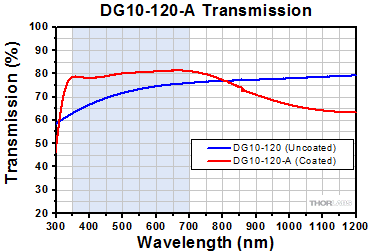

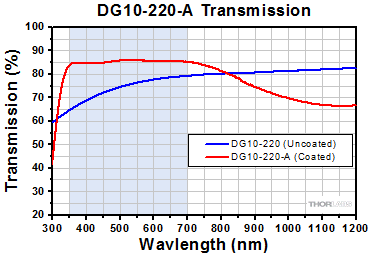
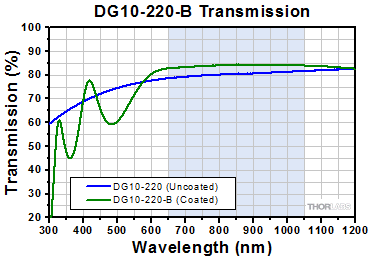

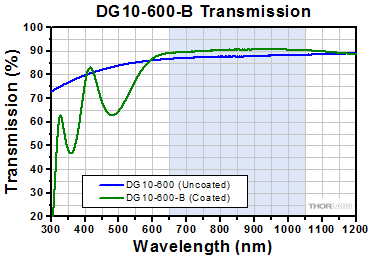


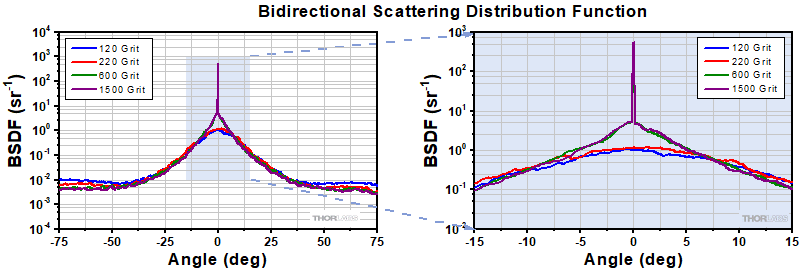 Click to Enlarge
Click to Enlarge Click to Enlarge
Click to Enlarge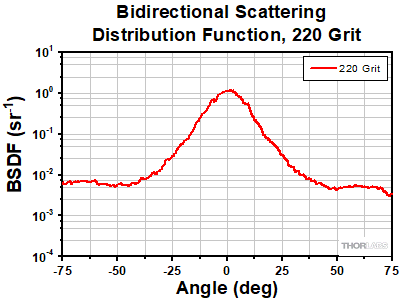 Click to Enlarge
Click to Enlarge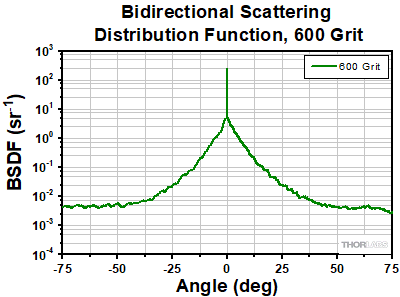 Click to Enlarge
Click to Enlarge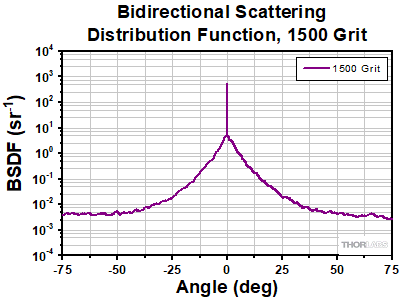 Click to Enlarge
Click to Enlarge
 AR-Coated, N-BK7, Ground Glass Diffusers
AR-Coated, N-BK7, Ground Glass Diffusers